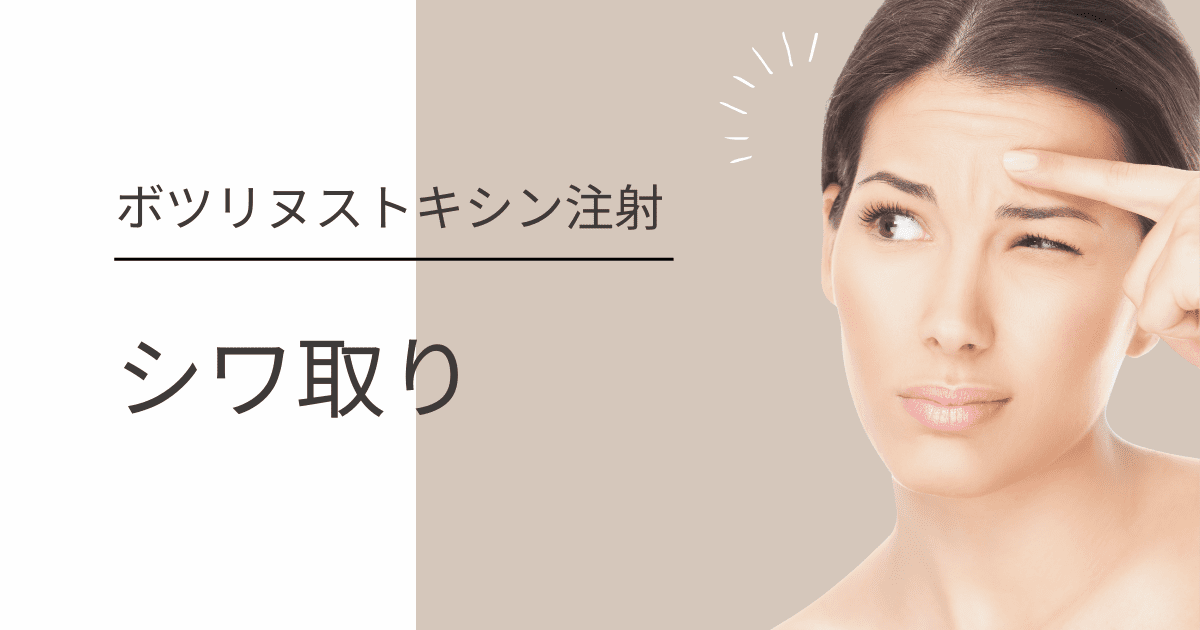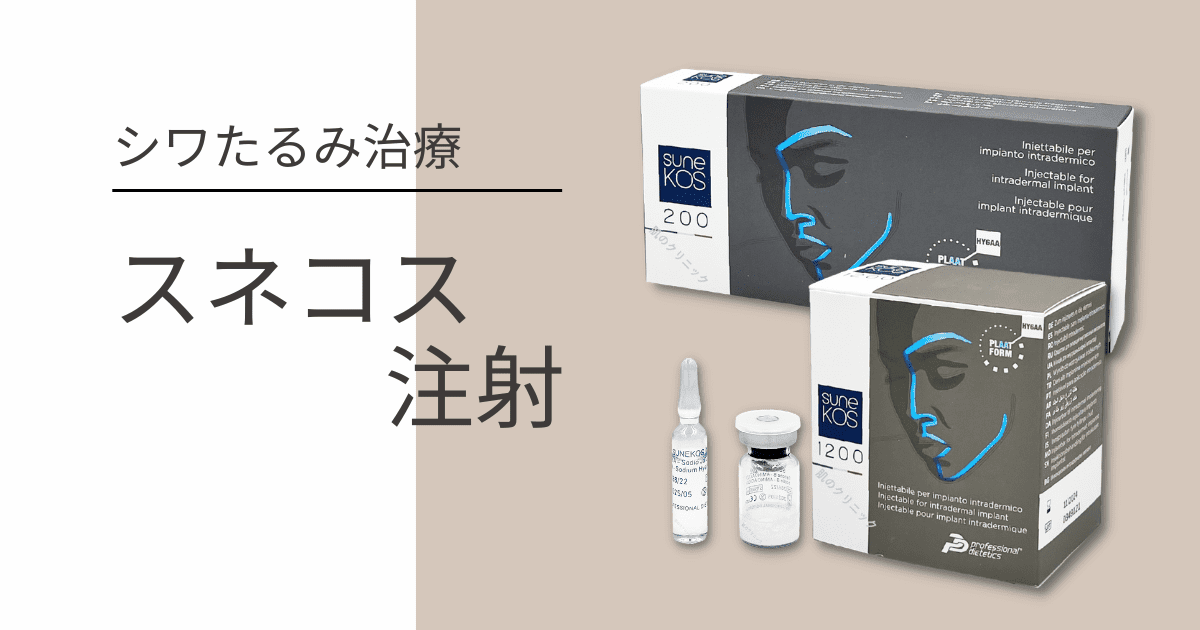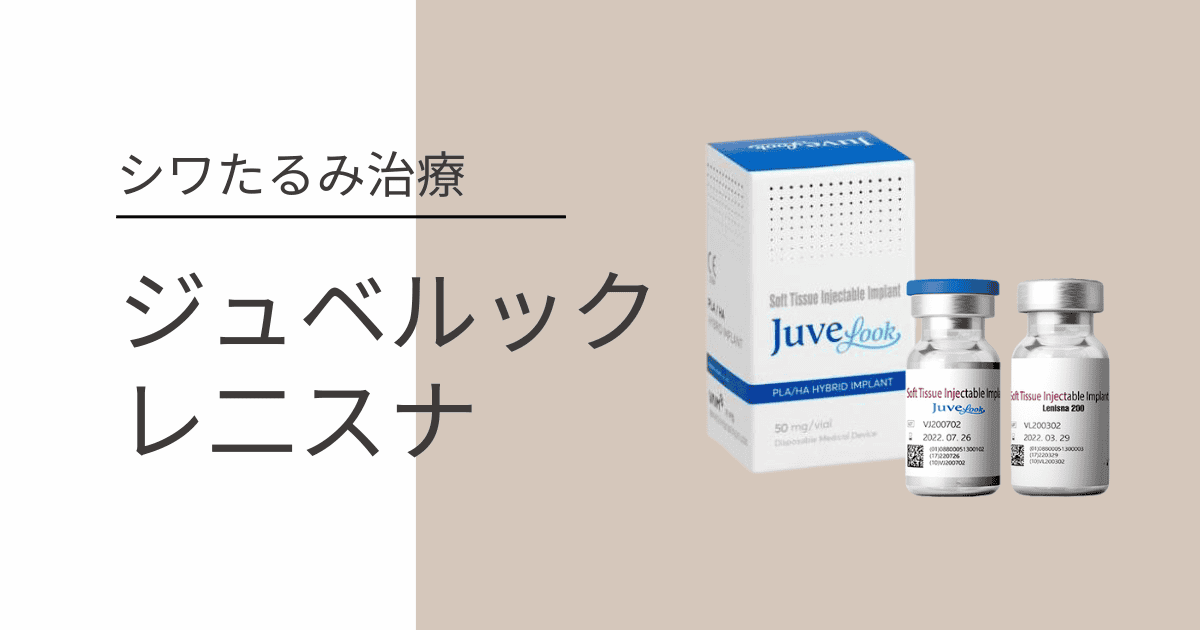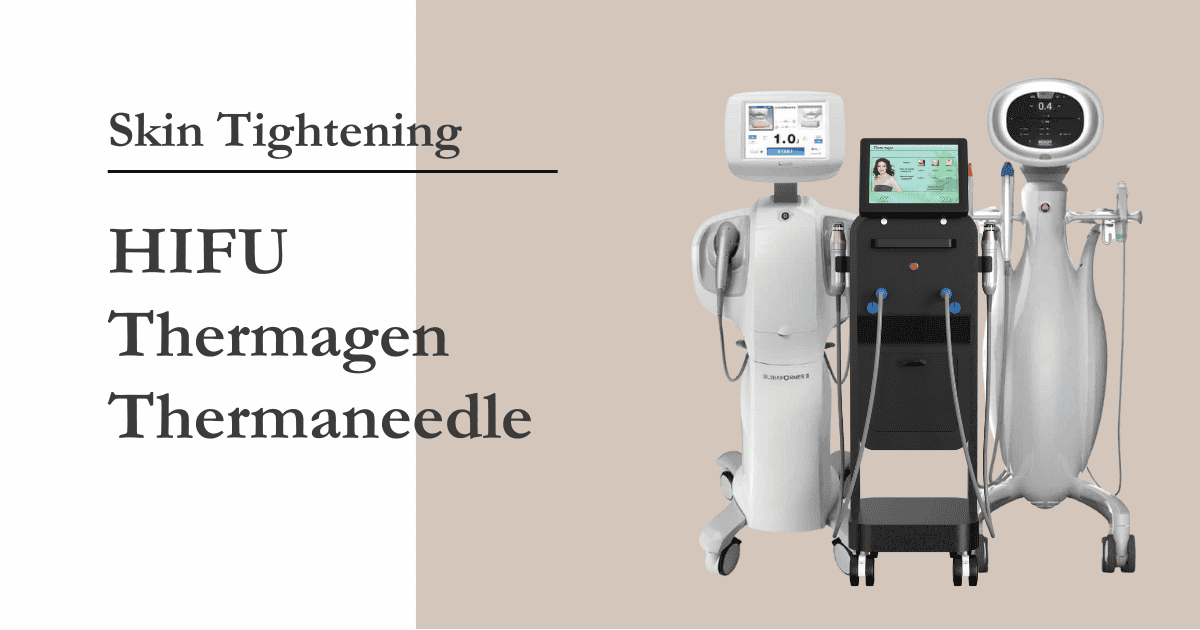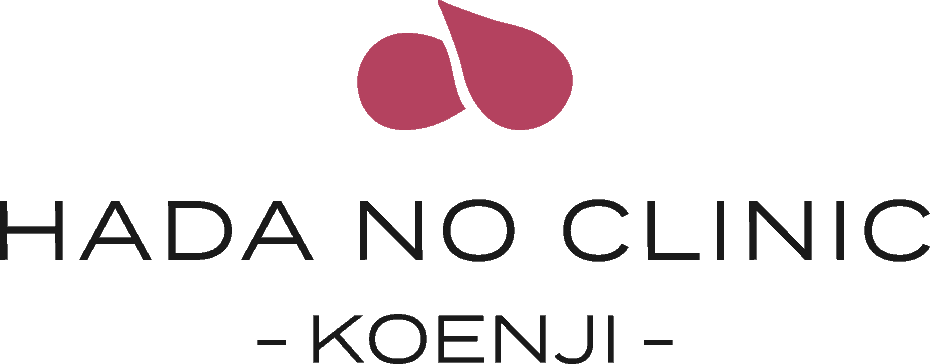Types of Wrinkles and Treatments
Wrinkles require different treatments depending on their type. For detailed information, please consult with a physician during your examination.
Expression Lines
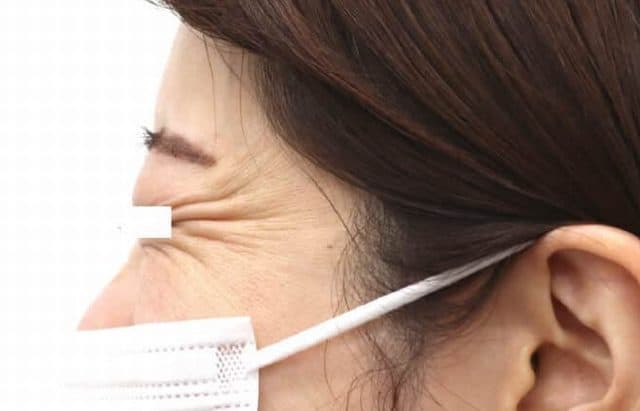
The wrinkles around the corners of your eyes when you smile, the wrinkles on your forehead when you raise your eyebrows, and the wrinkles between your eyebrows when you frown are all created dozens of times every day depending on your facial expressions. As the dermis loses its elasticity with age, it gradually deepens.
Botulinum toxin injections are effective for wrinkles caused by facial muscles. Improves wrinkles by relaxing the muscles that cause wrinkles. Even if wrinkles have already formed, if they are still shallow, botulinum toxin injections can be enough to improve them.
At our hospital, doctors examine muscle movements and wrinkle formation, and then inject botulinum toxin into the appropriate areas to preserve a natural facial expression.
The injection site and dose will be recorded in the medical record each time, and if the effect is insufficient, an additional injection will be given free of charge after two weeks.
Botulinum toxin treatment is recommended as a preventive treatment before wrinkles become deep.
Deep wrinkles
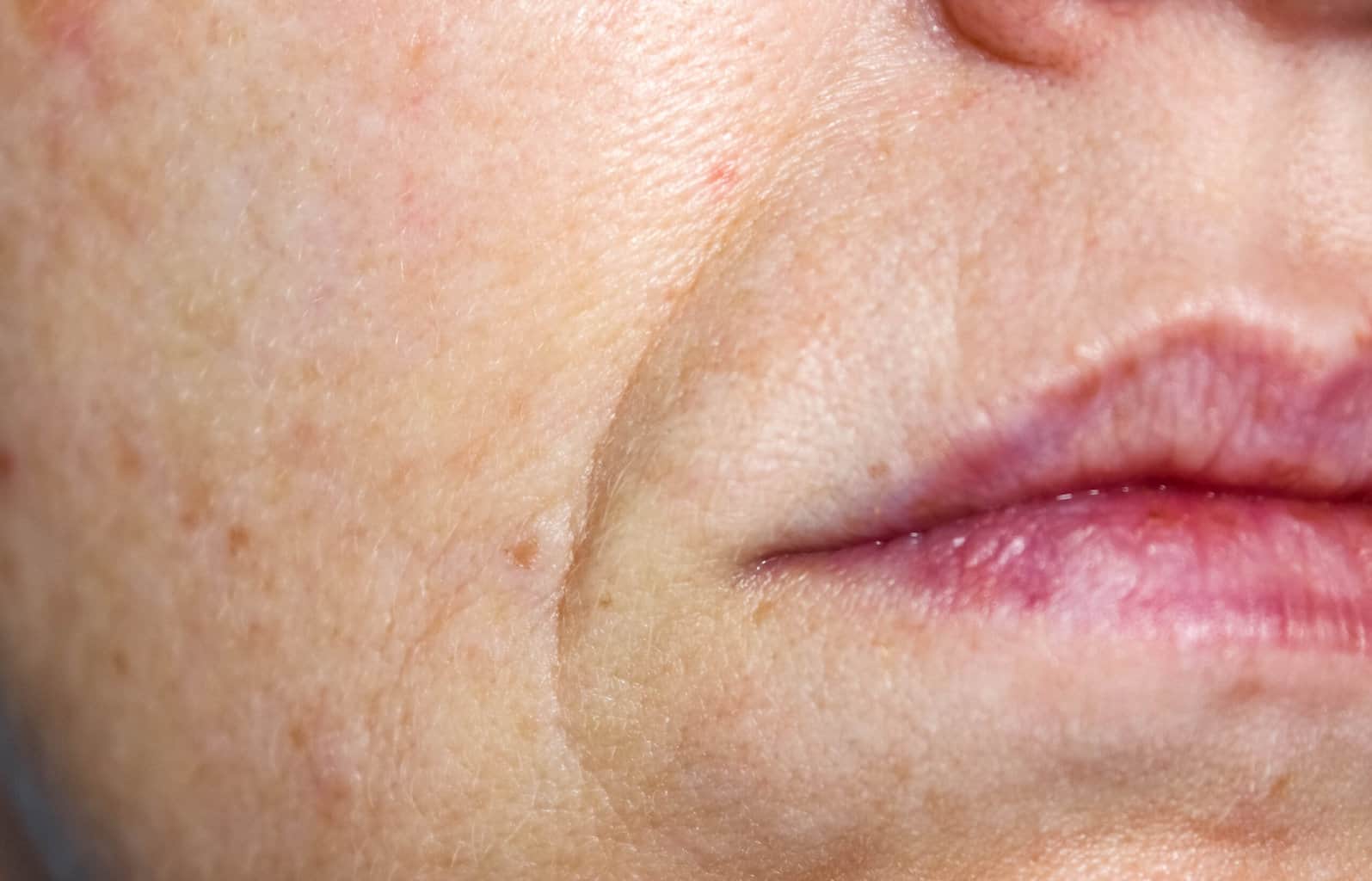
Deep wrinkles such as nasolabial folds, tear troughs, and forehead wrinkles are caused by decreased collagen in the dermis, decreased fat, bone atrophy, and ligament sagging.
Hyaluronic acid injections are effective for deep wrinkles. The injected hyaluronic acid plumps up the wrinkles from the inside. We also recommend Lenisuna, which is very popular in the beauty powerhouse that is Korea. Polylactic acid promotes the production of collagen and elastin, so you can expect a more natural rejuvenation.
Botulinum toxin injections two weeks before hyaluronic injections are particularly effective for wrinkles on the forehead.
At our clinic, we focus not only on the skin, but also on the related supporting ligaments, bone atrophy, fat tissue reduction, and sagging, and use hyaluronic acid injections to balance the entire face and aim for natural rejuvenation.
Fine wrinkles
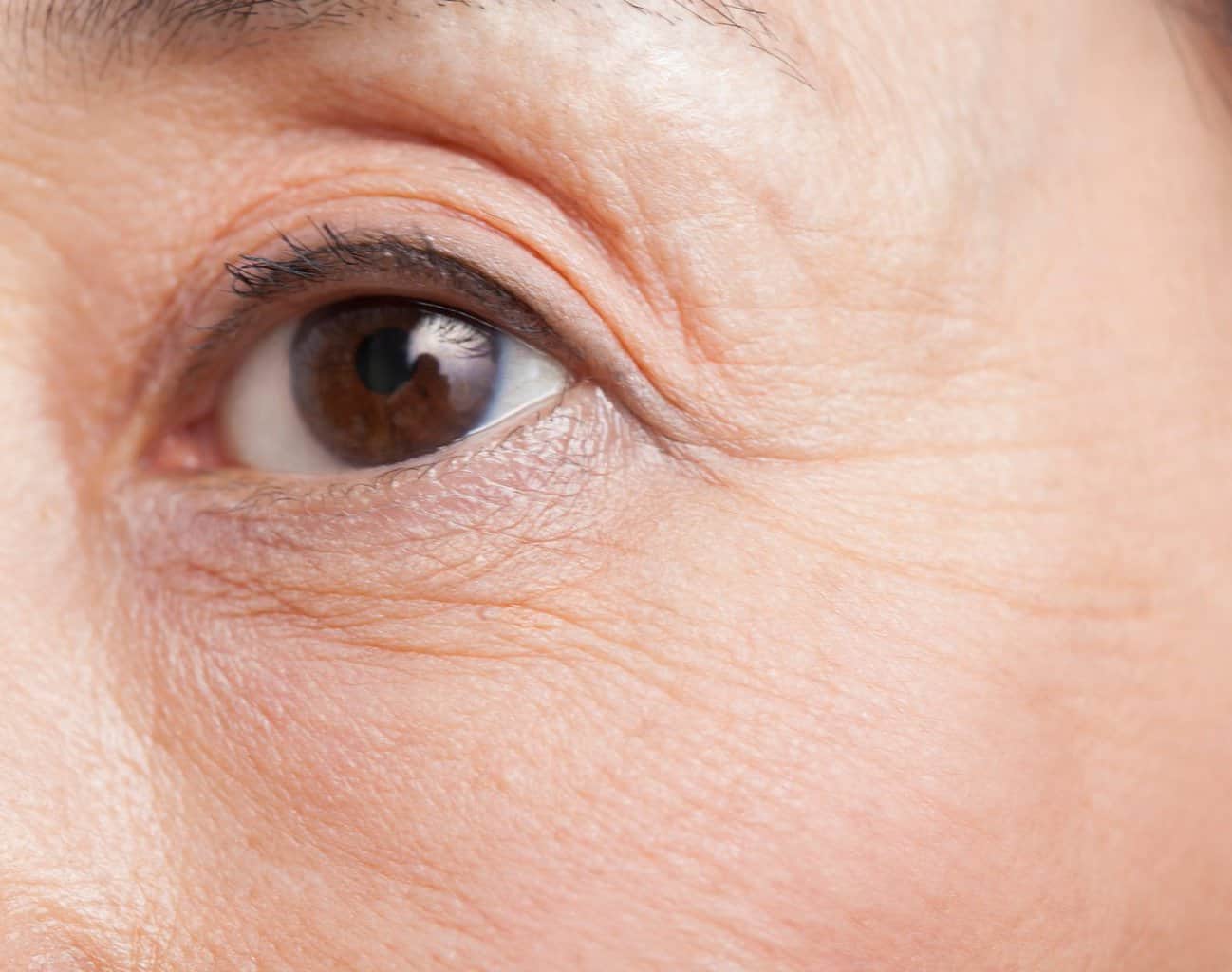
To reduce fine wrinkles and improve skin firmness, products like Juvelook and Sunekos, which promote collagen and elastin production in the dermis, are effective options. Exosome injections (derived from adipose stem cell culture supernatants) are also a good choice.
When hyaluronic acid is injected into shallow wrinkles, they may become unnaturally raised or uneven, but Juvelook, Sunekos and Exoxome only stimulate your own collagen production, and the preparations are quickly absorbed, so they do not look unnatural.
U Revs Pro is a weakly heat-crosslinked hyaluronic acid with high diffusivity, so it can be used as point injections to maintain skin firmness.
For neck wrinkles, we recommend Juvelook and Lenisna. Lenisna works on the deeper areas, while Juvelook works on the shallower areas, so you can expect improvement in neck firmness and fine wrinkles.
For slightly deeper wrinkles, we perform a soft hyaluronic acid injection called Belotero Soft. It is characterized by being less prone to unevenness than conventional hyaluronic acid.
If facial muscles are affected, botulinum toxin injections are also used. We also recommend preventive use of tretinoin, retinol, and placenta injections, which promote dermal regeneration and rejuvenation.
To be more effective
Although botulinum toxin injections and hyaluronic acid injections can be performed on the same day, it is ideal to perform hyaluronic acid injections two weeks after the botulinum toxin injections. Applying hyaluronic acid while the muscles that cause wrinkles are relaxed will improve wrinkles more easily and give a natural-looking finish.
Facial sagging treatment
Wrinkles and sagging are two sides of the same coin. Wrinkles are formed due to sagging of the dermis and subcutaneous tissue.
Sagging skin is caused by multiple factors, but the main causes are:
- Atrophy of facial bones
- Loosening of ligaments
- Facial muscle weakness and facial fascia sagging
- Reduction in subcutaneous tissue (fat)
- Decreased dermal tissue (collagen and elastin)
Atrophy of facial bones
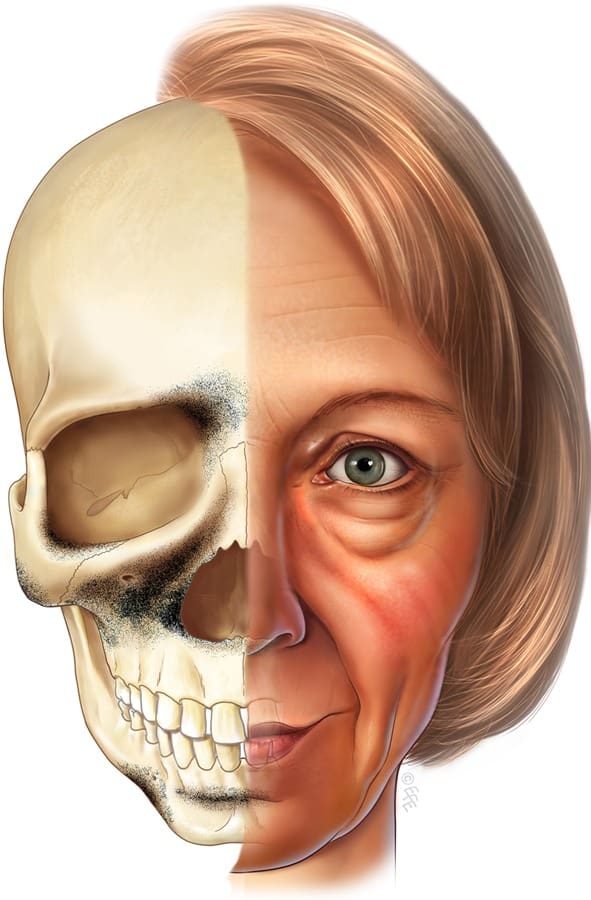
Bryan Mendelson,Changes in the facial skeleton with aging: implications and clinical applications in facial rejuvenation1
Bone atrophy, which is the shrinkage of facial bones, is one of the major causes of sagging skin.
- Frontal bone・・・When the forehead bone atrophies, the skin on the forehead becomes sagging and wrinkles become noticeable. As a result, the eyebrows are lowered and the eyes become smaller.
- Temporal bone・・・When the temple bone atrophies, the temple becomes sunken and the face looks gaunt.
- Orbital socke・・・When the bones around the eye atrophy, the eye socket becomes larger, the upper eyelid becomes sunken, and the skin under the eye becomes sagging.
- Anterior cheekbones・・・When the cheekbones atrophy, the position of the cheeks drops and the face becomes flat. The cheeks become sagging and the smile lines become deeper.
- Apertura piriformis (nostrils)・・・Due to atrophy of the nasal bones, the nostrils widen and the nose opens laterally.
- Maxilla/mandible・・・When the jaw bones atrophy, the skin around the mouth and jaw sag. Nasolabial folds, marionette lines, plum wrinkles on the chin, and wrinkles above the lips become more noticeable.
The volume lost due to bone atrophy is treated by replacing it with hyaluronic acid injections.
While looking at the overall balance of your face, we restore volume to naturally rejuvenate your face.
In recent years, volume-up treatments using the polylactic acid preparation, Lenisna have also become popular. Although the immediate effect after one treatment is less than that of hyaluronic acid, you can expect a natural volume-up effect over the long term.
Loosening of ligaments
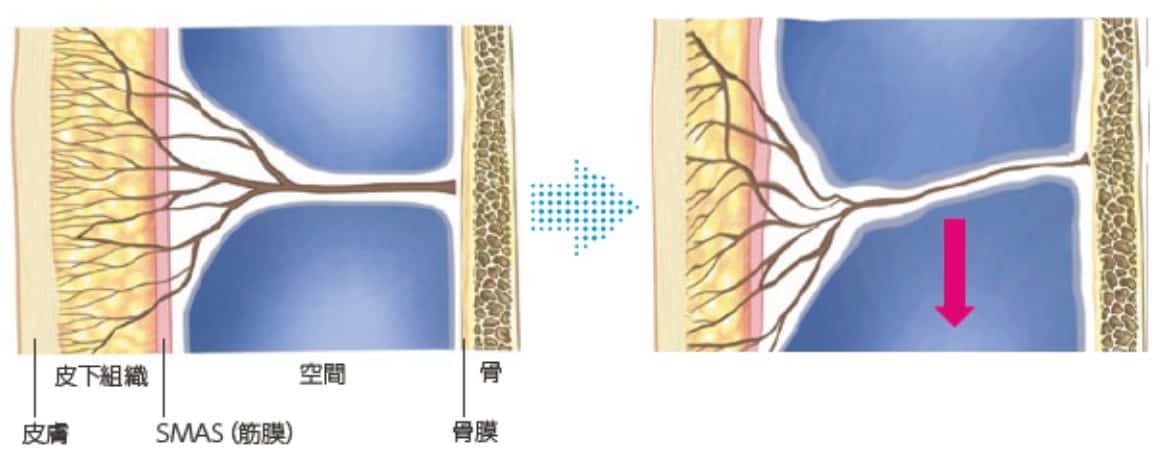
The skin of the face is supported by true ligaments that run from the bones to the dermis. Ligaments stretch and sag as we age.
As we age, ligaments loosen and sag, causing facial sagging.
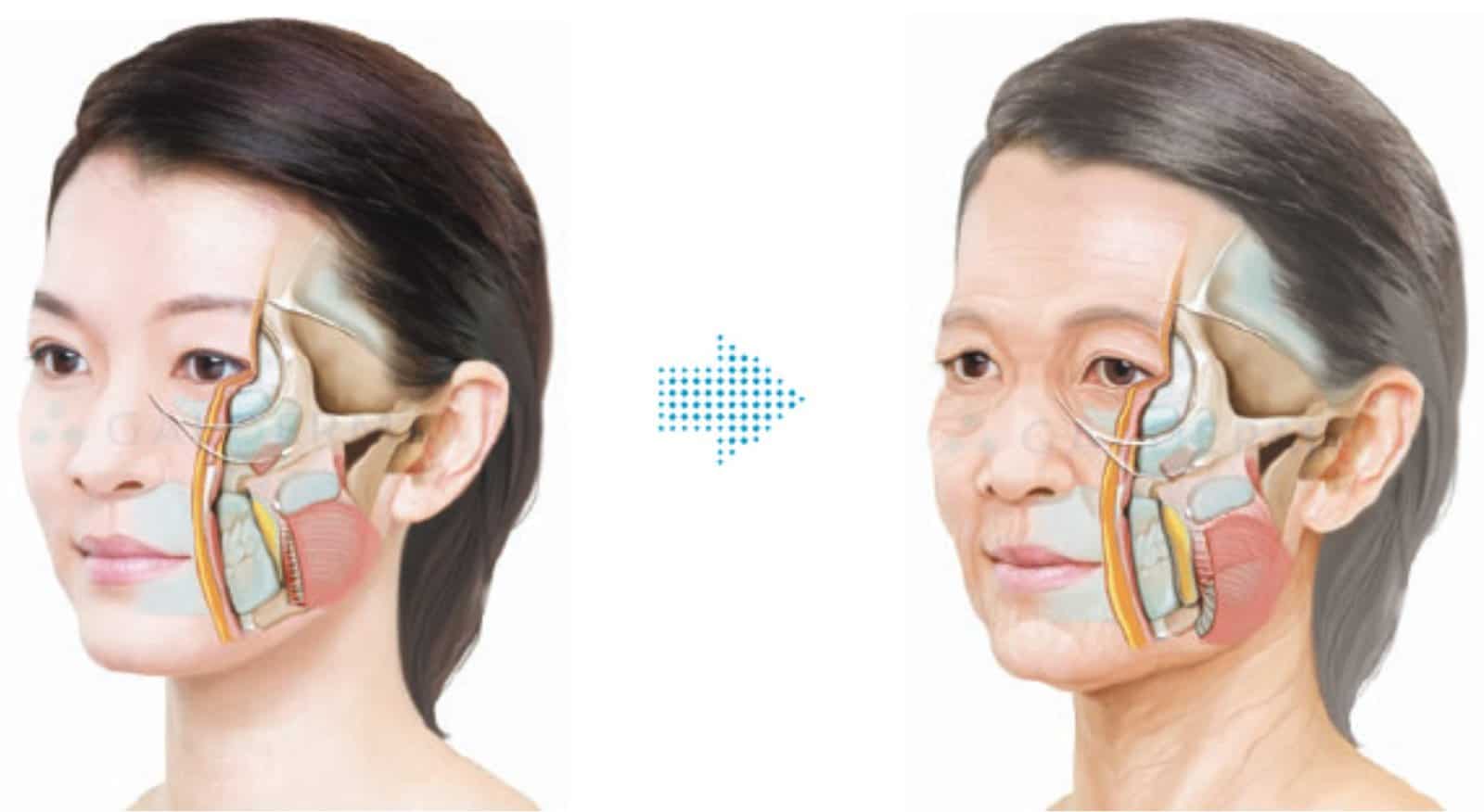
Hyaluronic acid lift is recommended to prevent ligaments from sagging.
Hard hyaluronic acid is injected under the ligament to lift and support the ligament. The position of the cheeks is raised, giving a natural lifting effect to the entire face.
Hyaluronic acid lift is recommended for young patients in their late 20s to 40s. By supporting the ligaments with hyaluronic acid before they stretch and become sagging, it is possible to suppress the stretching of the ligaments due to gravity.
On the other hand, if the ligament is already severely loosened, placing hyaluronic acid under the ligament will not lift it up, so there may be little effect.
Muscle weakness and fascial sagging
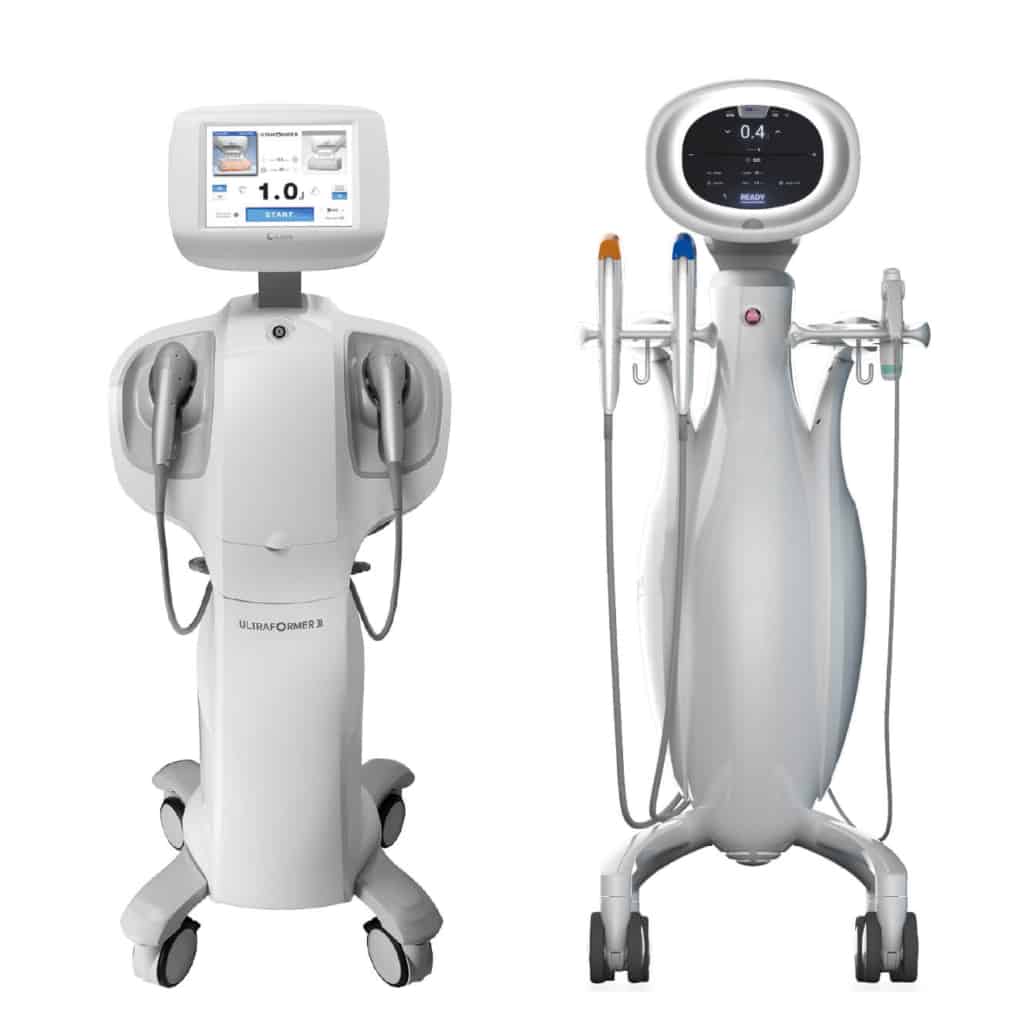
As muscles weaken, skin can start to sag. Conversely, strengthening muscles can create firmness that extends to the skin above, an effect many people have experienced.
Facial muscles are no different; as they lose volume, the fascia, subcutaneous tissue, and skin all tend to sag together.
Engaging in regular physical exercise and facial muscle training can help prevent sagging. Sports and other full-body activities also involve the facial muscles, so maintaining an active lifestyle can support facial firmness.
The most effective treatment for fascia sagging is a ‘facelift surgery,’ where the facial skin is lifted, the SMAS fascia is tightened, and excess skin is removed and sutured. However, this procedure has a lengthy downtime and may leave scars.
At our clinic, we offer non-invasive sagging treatments, including ‘HIFU’ and ‘Thermagen.’
HIFU uses high-density ultrasound to target the dermis and fascia, while Thermagen applies RF (radiofrequency) energy primarily to the subcutaneous layer, inducing tissue contraction to improve sagging. Compared to surgery, the results are milder, but they have the advantage of minimal downtime.
Reduction of subcutaneous tissue and dermis
As we age, subcutaneous tissue (fat) in various areas decreases. The skin sag due to the loss of volume, so hyaluronic acid injections are used to compensate for the volume.
Sagging of the dermis is caused by a decrease in extracellular matrices such as collagen and elastin. As a result, fine lines and sagging pores become more noticeable. The treatment policy is similar to the treatment of fine wrinkles mentioned above, and the main treatment is to improve the firmness of the skin.
We also recommend tretinoin, retinol, and placenta injections, which promote dermal regeneration and rejuvenation, as preventive daily care.
Sagging treatment by age
For those who do not want to undergo surgery or thread lift, we have summarized non-invasive sagging treatments by age group. The degree of sagging varies greatly from person to person even at the same age, so it cannot be generalized, but we recommend the following treatments as a guide.
Sagging Concerns in Your 20s
Since sagging is minimal in your 20s, a “Hyaluronic Acid Lift” once every 1–2 years can help slow down the stretching and weakening of supporting ligaments caused by aging and gravity, effectively preventing future sagging. Treatments like Juvelook, Lenisna, and Sunekos, which help maintain dermal strength, are also recommended.
For most people in their 20s, HIFU treatments are typically not necessary.
Sagging Concerns in Your 30s
For individuals in their 30s with mild sagging, we recommend “HIFU” or “Thermagen” every 3 to 6 months and a “Hyaluronic Acid Lift” once a year. For maintaining dermal health, options like Juvelook, Lenisna, and Sunekos are ideal.
If there is noticeable volume loss in the subcutaneous tissue, making nasolabial folds or midcheek grooves more prominent, these areas can be filled with hyaluronic acid injections to smooth out wrinkles and hollows.
Starting treatment before sagging becomes severe helps prevent the progression of sagging and wrinkles, preserving a youthful appearance.
Sagging Concerns in Your 40s and Beyond
For individuals in their 40s and older, we start with three sessions of “HIFU” and “Thermagen” every 3 months, followed by Thermagen every 3 months and HIFU every 6 months. For those with low fat levels and pronounced skin sagging, “Thermaneedle” is recommended over Thermagen.
Areas affected by bone resorption and fat loss can be enhanced with hyaluronic acid injections or Lenisna.
In this age group, the supporting ligaments are often already loosened, so while “Hyaluronic Acid Lift” may not produce visible lifting, it helps prevent further ligament stretching and is applied only where needed.
To address sagging and wrinkles, we initially use around 4 to 12 syringes of hyaluronic acid.* By first balancing the entire face and building a strong foundation, we also help prevent future sagging, reducing the amount of product needed for maintenance.
*The number of hyaluronic acid syringes can be adjusted according to your preferences, with treatments available from a single syringe.
List of references/websites
- Mendelson B, Wong CH. Changes in the facial skeleton with aging: implications and clinical applications in facial rejuvenation. Aesthetic Plast Surg. 2012 Aug;36(4):753-60. doi: 10.1007/s00266-012-9904-3. Epub 2012 May 12. PMID: 22580543; PMCID: PMC3404279.https://www.ncbi.nlm.nih.gov/pmc/articles/PMC3404279/figure/Fig6/
- Mendelson B, Wong CH. Changes in the Facial Skeleton With Aging: Implications and Clinical Applications in Facial Rejuvenation. Aesthetic Plast Surg. 2020 Aug;44(4):1151-1158. doi: 10.1007/s00266-020-01823-x. Epub 2012 May 12. PMID: 32844267.
- Shaw RB Jr, Katzel EB, Koltz PF, Kahn DM, Puzas EJ, Langstein HN. Facial bone density: effects of aging and impact on facial rejuvenation. Aesthet Surg J. 2012 Nov;32(8):937-42. doi: 10.1177/1090820X12462865. Epub 2012 Sep 24. PMID: 23012659.
- GALDERMA 医療従事者向けサイト レスチレンシリーズ https://www.lookgood-feelgood.jp/professional/index2.html 最終アクセス:2023/1/11
Related Pages
-
Wrinkles / Botulinum Toxin
Botulinum toxin injection for Wrinkles. -
Dermal filler, Hyaluronic acid injection
Wrinkle treatment and lifting by hyaluronic acid injection -
Sunekos Treatment
Treatment of fine lines and acne scars by snekos (non-cross-linked hyaluronic acid + amino acid) -
Juvelook and Lenisna
Juvelook and Lenisna injection treatment -
Skin Tightening Treatment: HIFU / Thermagen / Thermaneedle
Combination Treatment: HIFU and Thermagen Combining HIFU, which targets and t…

